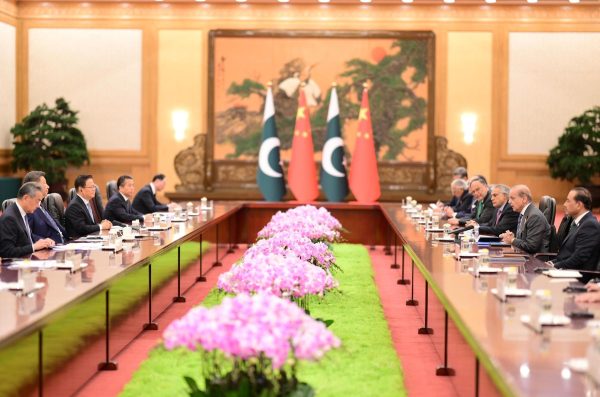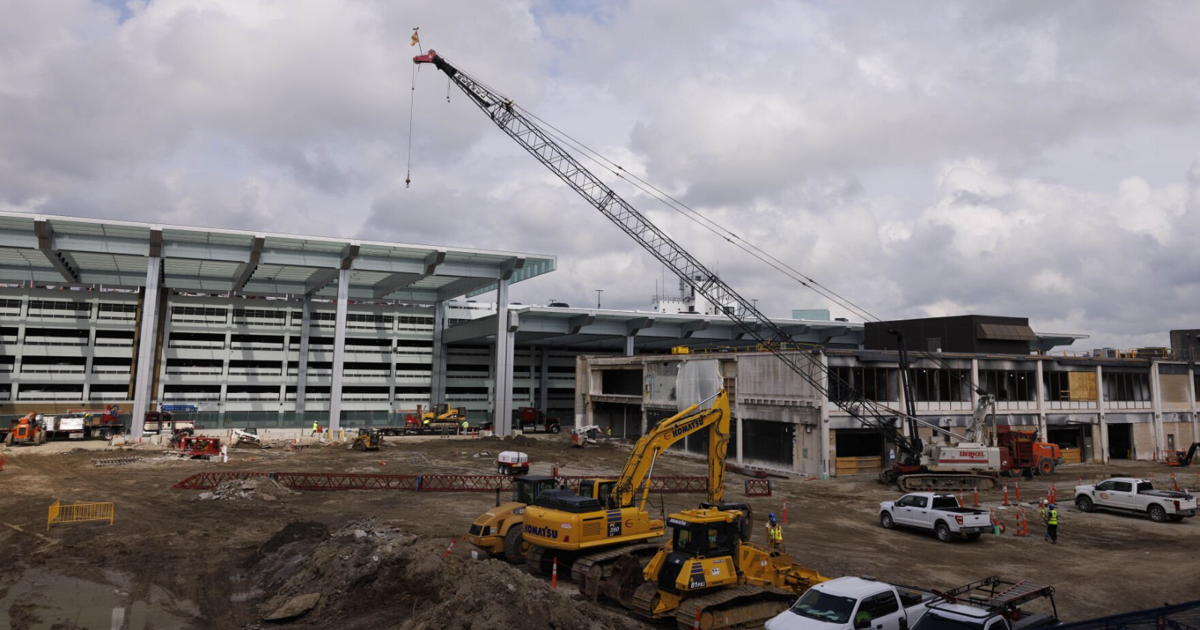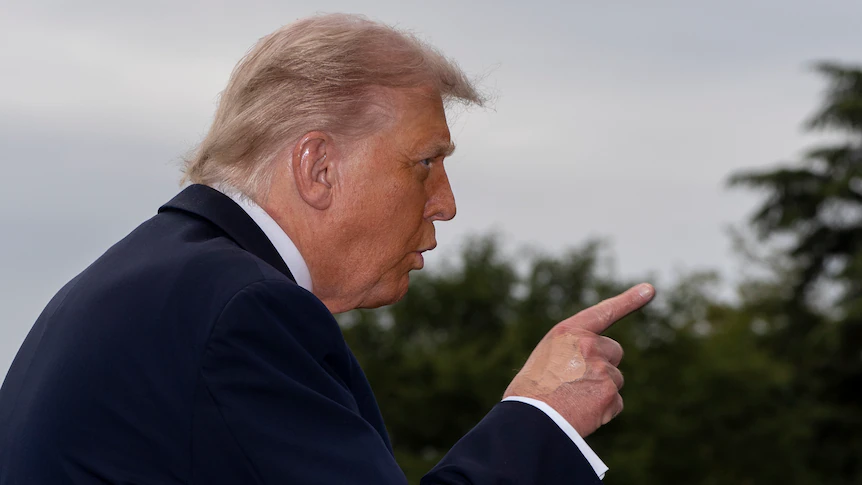By Waleed Sami
Copyright thediplomat

During the second Pakistan-China B2B Investment Conference, held on the sidelines of the Shanghai Cooperation Organization (SCO) summit in Tianjin, Pakistan’s Prime Minister Pakistan Shehbaz Sharif formally announced the launch of China-Pakistan Economic Corridor (CPEC) Phase 2, also known as CPEC 2.0. CPEC has been a cornerstone of China-Pakistan relations for more than a decade. For Beijing, it was a strategic gamble to avoid the infamous Malacca dilemma; for Pakistan, it was considered an economic “game changer.” Thus, both Beijing and Islamabad viewed CPEC as a win-win initiative. However, the West, led by the United States, labeled CPEC as an example of “debt trap diplomacy,” portraying China as an exploitative power, hiding its geopolitical goals under the guise of infrastructure diplomacy. It is no secret that CPEC was unable to achieve its set goals as per the timeline at the time of its inception. However, it would be wrong to point to a supposed “debt trap” as the primary reason. As CPEC is entering into the second phase, it is critical to understand Beijing’s development finance model vis-à-vis CPEC’s first phase and Islamabad’s management of CPEC finance. Only then we can truly understand China’s role in Pakistan, whether as an exploitative or benevolent power. The Long March to CPEC 2.0 CPEC, termed as the Belt and Road Initiative’s (BRI) flagship project, was formally launched in 2013. Initially, CPEC’s projects amounted to $46.5 billion; however, with time its scope was broadened and now total investment under CPEC has reached $62 billion. The initiative promised to give much-needed economic impetus to Pakistan but quickly entered uncharted waters and became mired in countless controversies. Thus CPEC has very few outcomes to showcase. As initially conceived, CPEC is divided into three phases: the short-term phase (2015-2020), the medium-term phase (2021-2025), and the long-term phase (2026-2030). The first phase, which focused on projects related to infrastructure, energy, and port development, was supposed to be completed in 2020, but it took five more years. In those five years, the second phase, whose purpose was to establish 33 special economic zones (SZEs), should have been concluded. Ironically, Pakistan’s prime minister has now announced the launch of this second phase in 2025’s third quarter – just a few months before it was supposed to be completed. This delay has cost Pakistan dearly. The overdue energy and infrastructure projects, cost overruns, and accusations of opaque contracts have cost the initiative its viability. Challenges to CPEC One of the main challenges to CPEC has been the political infighting in Pakistan. In 2015, when Pakistan Muslim League Nawaz (PML-N) was in power, it considered itself the chief architect of the initiative; meanwhile, the opposition party, Pakistan Tehreek-e-Insaf (PTI), accused the PML-N of corruption and inflated cost of projects. In 2018, the tables turned and the PTI came into the government. It attempted to reduce Pakistan’s financial risk by asking the Chinese side to review all the contracts, as the new government feared they were badly negotiated – either overly expensive or on terms excessively favoring China. However, Beijing was prepared to review only those projects that had not been started. In 2019, the PTI government engaged the International Monetary Fund (IMF) for a financial bailout to solve the balance of payment (BOP) crisis. For this bailout, Pakistan had to share details of CPEC with the IMF. Pakistan also had to agree with IMF conditions, like fiscal consolidation, that in practice required slowing down CPEC, which ultimately angered the Chinese. Ethnic and provincial tension also had a fair share in slowing down CPEC. In 2016, the PTI-led provincial government in Khyber Pakhtunkhwa (KP) received only 2 percent of the share in project allocations, despite demanding that the province should be eligible for nearly 13 percent. PTI politicians began to term CPEC as the “China-Punjab Economic Corridor,” promoting a narrative that Punjab was favored over KP and Balochistan in CPEC implementation. In Balochistan, the Baloch nationalist parties also criticized the federal government for prioritizing the eastern route (Punjab) over the western route (Balochistan), hindering the province’s opportunity for infrastructure development. Ethnic tensions have also translated into security challenges in both provinces in the form of the Balochistan Liberation Army (BLA) in Balochistan and the Tehreek-e-Taliban Pakistan (TTP) in KP. The BLA, a separatist terrorist organization, blames Beijing and Islamabad for unmet promises of development and local jobs, exploitation of provincial resources, and corruption. With this raison d’être, the BLA is attacking Chinese workers in Pakistan. From 2021 until late 2024, there were 14 attacks on CPEC, killing 20 Chinese citizens and injuring 34. Most of these attacks were claimed by the BLA. Similarly, in KP, the TTP is also targeting Chinese interests. Since the U.S. withdrawal from Afghanistan, the TTP has rapidly increased the number of attacks in Pakistan. It considers Pakistan an “infidel state” and opposes China due to its treatment of Uyghur Muslims in Xinjiang. To undermine both states, the TTP attacks Chinese national and strategic infrastructure in Pakistan. Its high profile targets included attacks on Chinese workers in KP in March 2024. Also, a suicide bomber was successful in killing five Chinese and a Pakistani national. Such incidents have raised questions on Chinese national and investment safety in Pakistan, further complicating the completion of CPEC. Hidden Cost of CPEC Phase 1 According to economist Ali Hasanain, an associate professor at Lahore University of Management Sciences, CPEC’s original sin was that a large number of its projects relied on foreign currencies, which ultimately clashed with Pakistan’s domestic-oriented exchange rate and industrial policies, narrowing the fiscal space for Islamabad. Currently, Pakistan owes more than $7.5 billion for setting up power plants and additional nearly $2 billion to Chinese energy producers in circular debt, or unpaid bills. Due to the delay in CPEC 2.0, Pakistan has been unable to establish the industrial base needed to transform into an export-driven economy and pay off its debts. Consequently, Pakistan had to seek more loans to pay past loans – resulting in a prolonged debt crisis. Out of $62 billion, $35 billion was spent on funding 21 power projects, making power the most expensive sector of CPEC. Ironically, China’s priority in CPEC was connectivity projects but Pakistan’s government wanted the initial financing to go toward the power sector. This move did help Pakistan meet its energy demands. According to the Economic Survey (2023-24), Pakistan almost doubled its domestic power capacity, increasing power production to 42,131 MW. However, this has further exacerbated the national debt crisis. The finance structure between Chinese Independent Power Producers (IPPs) and Pakistan’s government has a 75 percent debt-to-equity ratio, yet some IPPs enjoy guaranteed exorbitant returns of 27-34 percent on equity from the government. Pakistan’s government has earmarked 5 billion rupees per month (around $540 million) to go to Chinese IPPs, whether that electricity is consumed or not. To understand the difference, before the start of CPEC power projects in 2015, Pakistan’s capacity charges were 384 billion rupees, but they have mounted to 2,124 billion after addition of Chinese IPPs. This financial structure of guaranteed returns and the capacity charges adds to the circular debt in the power sector of Pakistan, which amounts to $15 billion. There have been repeated attempts to restructure the payment of this massive debt, but so far no official acceptance of the proposal from the Chinese side. Another reason for the circular debt in CPEC power plants is the poor planning of coal-based power plants such as Sahiwal, Port Qasim, and Hub. These plants depend upon imported coal from South Africa, Australia, and Indonesia. This both increases the cost of electricity for domestic consumption and drives up fuel import bills, which increases Pakistan’s BOP deficit. Moreover, CPEC Authority, created during the PTI’s tenure in a bid to speed up CPEC, released a report stating that “excess set-up costs of PKR 32.46 billion (approximately $204 million) was allowed to the two coal-based [Chinese] plants due to misrepresentation by sponsors regarding [deductions for] the ‘Interest During Construction’ (IDC) as well as non-consideration of earlier completion of plants.” In the case of the Sahiwal plant, the interest deduction was permitted for 48 months, even though the project was completed within 27-29 months. As a result, Pakistan has to pay a Return on Equity (RoE) of $27.4 million annually until the project life is over – a period of 30 years. Other than the power sector, Gwadar port has remained a major challenge in CPEC’s overall success. When it was conceived it was termed as CPEC’s “crown jewel,” as it would link western China with the Indian Ocean to escape the “Malacca dilemma.” However, it failed to live up to its potential. The first reason for its failure was on the technical side. The port is built with three berths only. In comparison, Karachi port has 33 berths. Gwadar handles just 3.2 percent of the containers that Karachi does. The second flaw in its business model. A full 90 percent of its revenue goes to China and 10 percent to Pakistan, with nearly nothing for the provincial and local government. That has created a big rift between the locals and the state, exacerbating the ethnic and provincial tensions that already surrounded CPEC. CPEC Has Many Problems, But Is It a Debt Trap? The concept of “debt trap diplomacy” refers to the deliberate lending of money, directly or indirectly, through economically unviable and unsustainable infrastructure projects, by an economic power to states with weak economies that are likely to default on their debts. This enables the lender to later convert the debt into geopolitical influence, securing its strategic interests, even at the cost of the borrower state’s national interest. The phenomenon gained traction in global politics when China was accused of using debt traps as a foreign policy tool in BRI projects. According to this narrative, China was using unsustainable debt to force recipient states into giving sovereign concessions, such as the transfer of strategic assets. The infamous case of Sri Lanka’s Hambantota port is often cited as a classic example of China’s using debt trap diplomacy to seize strategic assets from a state. However, when objectively and critically analyzed, it becomes evident that Sri Lanka’s economic troubles stem largely from domestic mismanagement rather than China’s allegedly predatory lending practices. Most of Sri Lanka’s debt was not owed to China, but to international bond-holders. Western critics have raised similar accusations of debt trap diplomacy regarding CPEC. To strengthen their case, they highlight and criticize a common misperception vis-à-vis CPEC, which is that the bulk of investments in CPEC projects is in the form of foreign direct investment (FDI) from China. In reality, FDI’s contribution to CPEC projects is negligible; the overwhelming majority of projects are funded through commercial loans. Approximately 95.2 percent of energy projects and 73 percent of transportation projects were financed via commercial loans from Chinese financial institutions. CPEC critics argue that if geopolitical differences arise between Pakistan and China, China’s benevolent behavior vis-à-vis Pakistan will diminish. Consequently, economic concessions such as debt rollovers or rescheduling will no longer be available. Given Pakistan’s precarious economic conditions, it may struggle to meet debt obligations on time. In such a situation, critics are of the view that China will strong-arm Pakistan to convert this debt into equity, with the result of China gaining control of key strategic assets, as it allegedly did in Sri Lanka. Critics build a compelling case; however, as has been widely demonstrated in other cases, an objective analysis undermines the debt trap narrative. For one thing, China owns 20 percent of Pakistan’s external debt, whereas Western-influenced international financial institutions – such as the World Bank, the IMF and the Asian Development Bank – collectively own more than 40 percent of Pakistan’s debt. In addition, whether Chinese loans to Pakistan under CPEC are unsustainable is open to debate. Leading economists of Pakistan agree that if CPEC projects had been completed on time, Pakistan’s economy would be in a much stronger position – and able to easily repay all the loans. Thus, CPEC being an instrument of Chinese debt trap diplomacy is a myth. Instead, it was the delay in CPEC 2.0 – due to domestic factors in Pakistan itself – that prolonged the debt crisis and nearly disrupted the potential success of the initiative.



